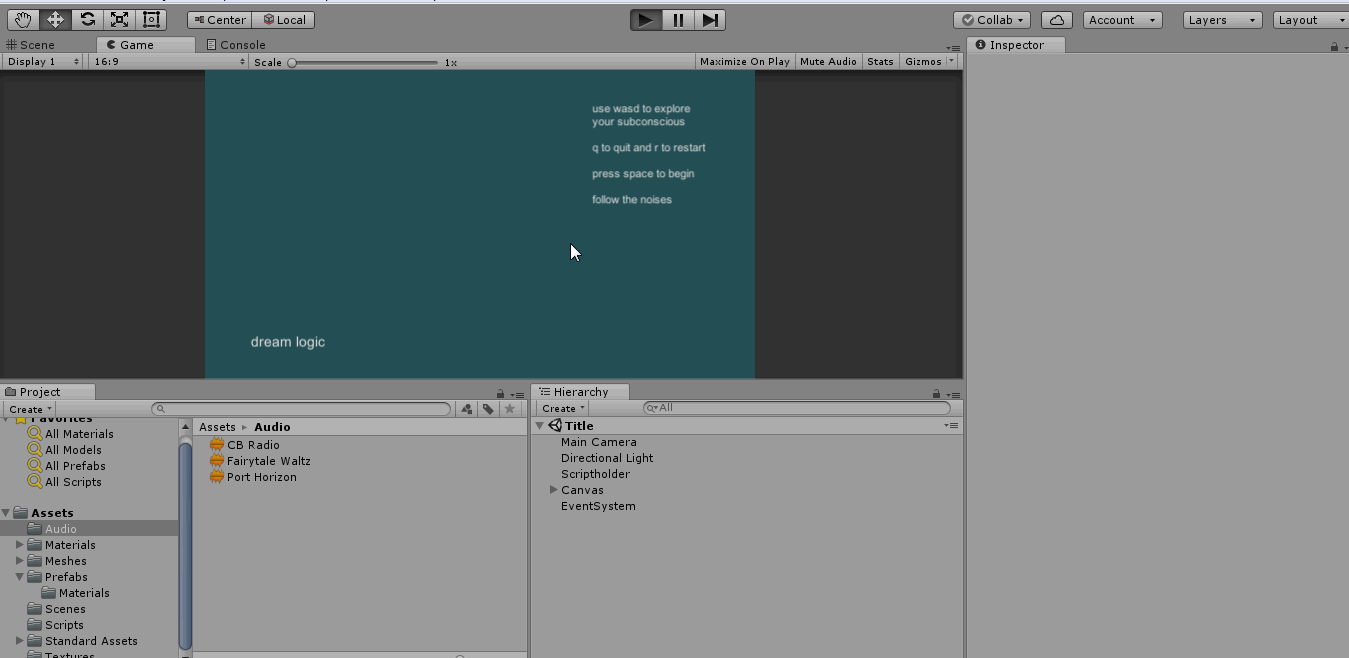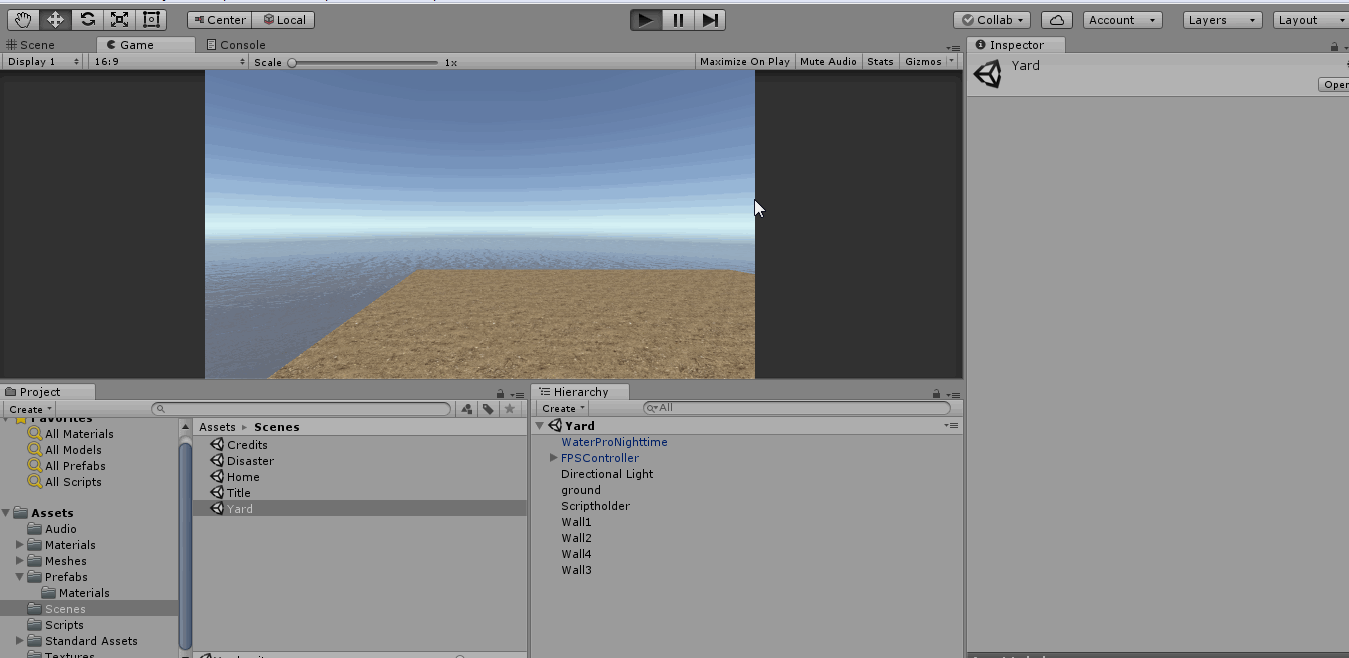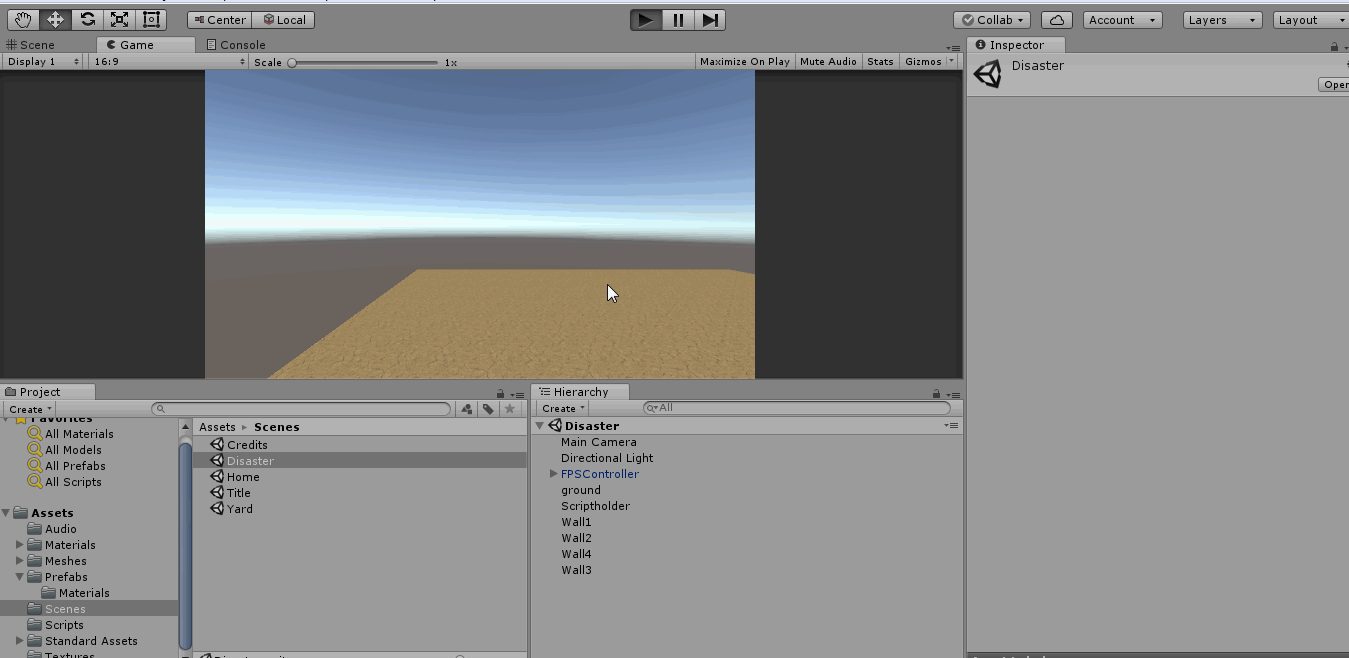I like looking at things in games. I’m realizing that as I work through these projects and reflect on how I’ve approached games throughout my life.
It hadn’t occurred to me that Dream Logic is essentially a hide-and-seek game, because I had been approaching it as primarily something to look at, a space to navigate, a scene to explore. The noise-seeking element of the game was intended to create some sense of mystery, intrigue, or narrative, and to ensure that the player would (probably) touch the thing that would bring them to the next level, but I didn’t consider it as the crux of the gameplay in and of itself. I looked at it as simply something to listen to, something to experience, somewhat passively, like the rest of these (mostly) still scenes*.

When I was working on the second scene of the game, featuring the house, swing sets, and too-big stuffed foxes (yes, they were foxes), I changed elements from the code for the first scene one bit at a time to fit my new vision. At some point, I had changed almost all the elements I had intended to be different in this second scene – except for the fox. The disorienting repetition, the way that the organization of objects on the landscape doesn’t seem to make much sense, the fact that the layout changes with each visit to the spaces portrayed (including the one-off objects like the houses and the bed) all read to me as the kind of surreal, nonsensical layout of a dreamscape.

In case it hasn’t become clear, I find the idea of being a small figure in a larger, otherwise somewhat ordinary space very interesting. It puts the ordinary in a new context, makes it extraordinary, calls on the player to reinterpret normal objects they might encounter in the game as potentially magic or special. Why else would they be so big, and you so small? Something must be happening here.

Wandering around someone else’s room is a very intimate thing, and, by making the player tiny, a fly on the wall, the experience can almost become more intimate. You look more closely at little things, because you’re right up next to them. You can get into more spaces, see more detail.
I’m not sure if I will want to revisit the idea of being a small figure in a home or room in another project this quarter**, but I have always gotten a lot of enjoyment out of exploring a space with a lot of detail, with Easter eggs and narrative. A person’s physical environment can say a lot about them – or nothing at all. Right now, my room is full of boxes of old things, bags of old clothes. Some of them are going to be donated or reused, and others are just going to live with me now. Clean and dirty clothes are scattered all over the floor – or, what little is visible around the boxes. My desk is messy, practically unusable, with piles of fabric scraps and loose pins covering it. A tiny figure in my room might see barber sheers, old car keys, notes to myself that are written over and over because I still haven’t gotten around to them. Right now, those details of my physical environment can definitely tell a story, maybe more clearly than I would be willing to share verbally in certain contexts. If I do revisit this concept, though, I would like to include the suggestion of human presence. Maybe a coffee cup with steam still rising from it, or an open door and a barely-audible conversation happening in a nearby room. The light might change to imply the passing of time, some movement in this universe, or maybe music or a talk show plays from a radio somewhere in the room.
*The water in the second level animates.
**In another class I’m taking this quarter, one of my professors said that she thought being a designer or artist was often about having some idea in your head, and just working on it again and again until you’re satisfied, full-up on the idea, and can move on to the next one.
